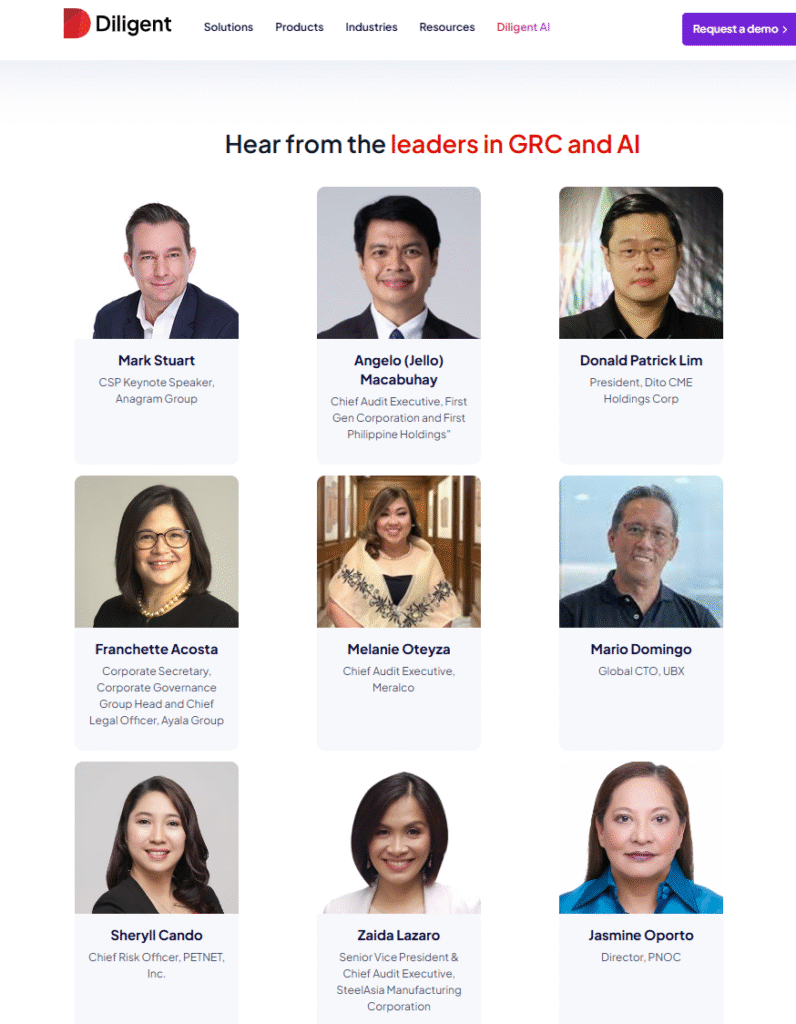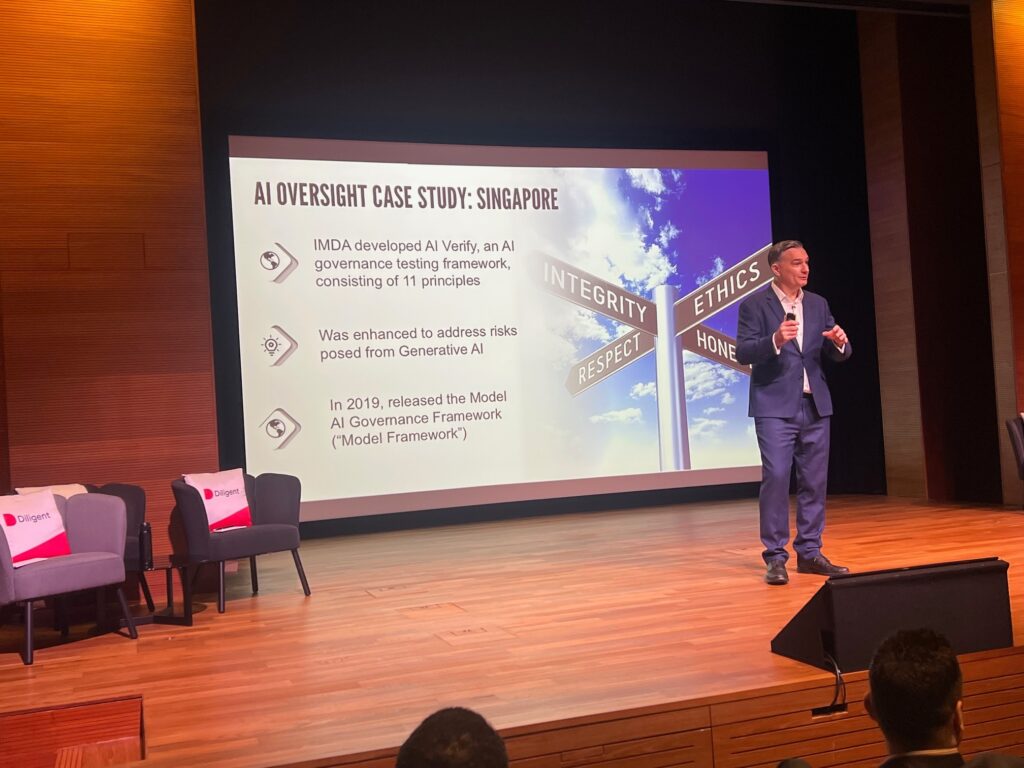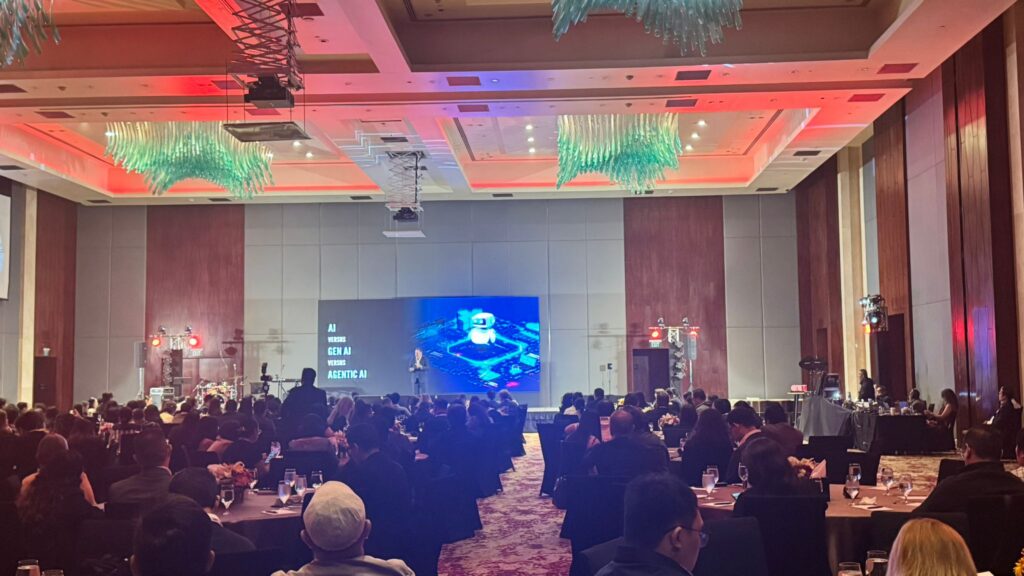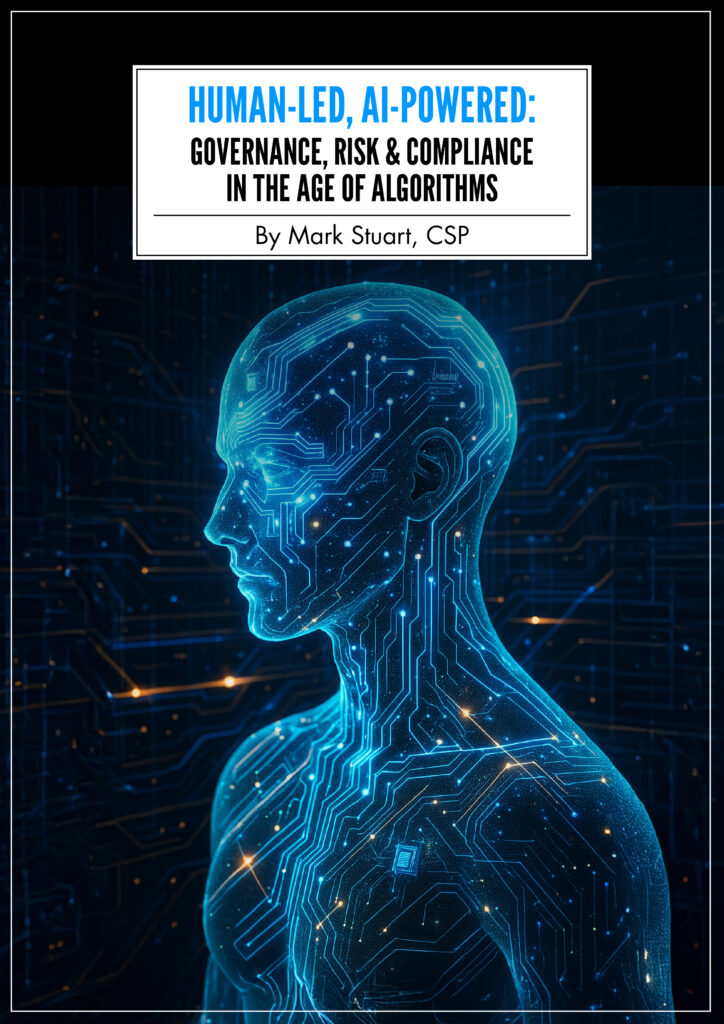Artificial Intelligence (AI) has quickly moved from being a niche concept to becoming a boardroom and workplace conversation across Asia. When I was asked to deliver keynote speeches for a tech client in both Singapore and Manila, the challenge was clear: create one unifying theme, but customise it so that each audience left with insights tailored to their context. This is a case study of that process.
The poster for the client event in Singapore

The poster for the client event in Manila

The Client Brief
The client, a leading global technology company, wanted to hold a series of conferences for its customers and network in Asia. Their goal was to help participants better understand how AI is reshaping the way organisations work, and what that means for leaders and teams today.
At the same time, the events in Singapore and Manila had slightly different objectives. In Singapore, the aim was to reach senior leaders and decision-makers, and discuss how AI should be managed strategically, with a focus on governance, risk, and compliance. In Manila, the priority was to reach a wider audience, many of whom were looking for practical applications of the AI software in their day-to-day work, and a more interactive keynote.
A single, unadapted keynote would not have delivered the impact the client needed. Instead, I set about designing one speech, guided by the theme “Human-Led, AI-Powered”, that could be customised with different specifications.

Step 1: Listening and Understanding
I always begin with conversations. Before building any slides or writing a word, I spoke to the client to ask them questions such as: What do you want your teams to think, feel, and do after the keynote? What are the specific challenges your teams face in Singapore versus Manila? Which examples of AI would feel most relevant to each group?
The answers shaped the keynotes content and direction.
Step 2: Building the Core Narrative
Although the speeches were adapted, I wanted them to share the same foundation. The core narrative revolved around three points: AI is already here – not a future concept, but something shaping our daily lives. Human leadership is essential – technology on its own is not enough; people set the direction. Practical steps create momentum – even small experiments with AI can unlock significant value.
This framework gave me the flexibility to expand certain areas in Singapore, and bring in different case studies in Manila.

Step 3: Customising for the Audience
In Singapore, the audience included senior executives and industry leaders. The keynote was framed around strategy, governance, and the ethical issues facing leaders.
Key elements included exploring how AI can unintentionally perpetuate bias, and what frameworks leaders can adopt to mitigate risks. I discussed board-level responsibility and how governance structures can ensure AI is deployed responsibly. I also brought in case studies from finance and regulation. As Singapore is a financial hub, examples of AI in banking, fraud detection, and regulatory technology resonated strongly.
The tone was reflective and inspirational. Participants engaged with thoughtful questions about future-proofing and managing disruption responsibly.
Step 4: Customising for Manila
In Manila, the audience was broader, including managers and operational teams. Here, the keynote became more practical, with a focus on real-world applications.
I demonstrated the advantages that AI can bring, freeing up time for higher-value work without replacing their jobs.
The tone was lively and accessible. Participants, although further behind in their AI journey. were eager to try new tools and left with ideas they could apply immediately.

Step 5: Making Complex Concepts Simple
Across both countries, I kept the explanations of AI accessible.
I broke down key terms in plain language: Artificial Intelligence as systems designed to mimic human intelligence; Machine Learning as algorithms that learn from data and improve over time; and Generative AI as tools that can create text, images, or solutions from prompts.
Step 6: Weaving in Local Context
Customisation goes beyond adjusting content; it’s about making the audience feel the message was created with them in mind.
In Singapore, I drew on government initiatives around AI adoption, financial regulation, and smart nation strategies. In Manila, I referenced the developments in government support, the importance of upskilling, and the potential of AI in process optimisation.
These local references helped participants see AI not as a distant, abstract trend, but as something already shaping their professional environments.
Reflections After the Events
What stood out most was the difference in audience energy. In Singapore, the engagement came from leaders asking how to align AI with long-term goals. In Manila, the enthusiasm was about experimentation and immediate application. Both responses reinforced the importance of tailoring the same core message to local needs.
For me personally, the experience was a reminder that keynote speaking is not about delivering a standard script. It’s about listening, adapting, and bridging the gap between global trends and local realities.
Key Lessons for Future Events
This case study highlights a few lessons that may help other organisations planning events across multiple countries. Start with the audience’s needs – the same theme can mean very different things depending on who is in the room.
Keep the core narrative consistent – a unifying idea helps maintain coherence across different events. Adapt the focus areas – use examples and stories that feel relevant locally. Make the complex simple – participants remember what they can understand and apply. Balance inspiration with action – audiences want both big ideas and practical steps.
The Job of a Keynote Speaker is to Resonate and Inspire
Delivering the same keynote theme across two countries was a valuable reminder of why I enjoy this work. AI is a global force, but its impact is always felt in very human, very local ways. By customising the message, it was possible to give both audiences something meaningful to take away – whether that was strategic foresight in Singapore, or practical tools in Manila.
At its heart, the role of a keynote speaker is not just to share knowledge, but to translate it into something that resonates with each audience.
AI will continue to evolve rapidly, but one thing remains constant: it takes human leadership to guide how we use it.
?Mark is a CSP and Professional Member of the Asia Professional Speakers Singapore (APSS Singapore), Group Representative of the British Chamber of Commerce Singapore, Entrepreneur & Small Business Committee. Mark has been based in Singapore for over 15+ years giving him valuable experience and understanding of Singapore and Asia. Learn more about Mark here.



